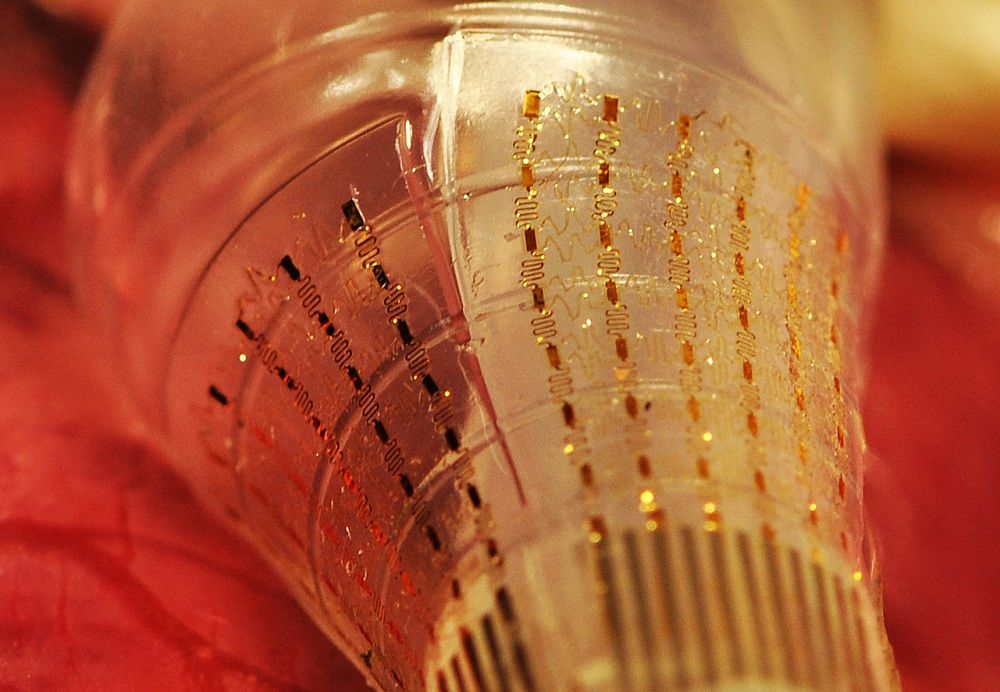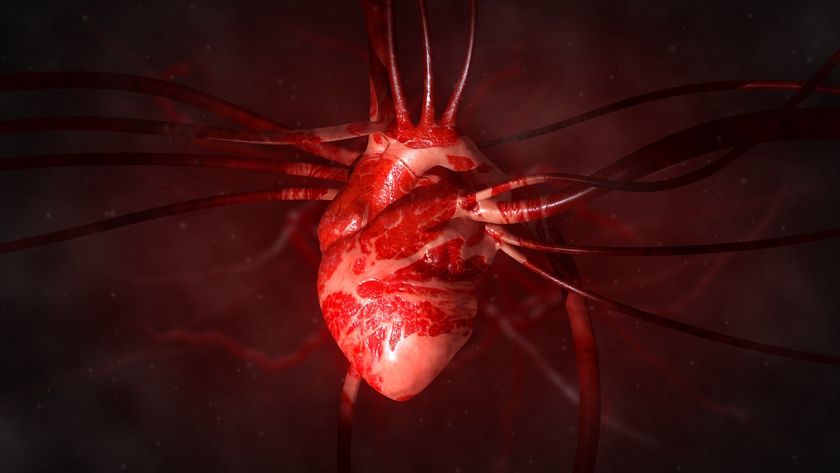Research in Action: Balloon Electronics Get to the Heart of Cardiac Medicine

This Research in Action article was provided to LiveScience in partnership with the National Science Foundation.
Balloon catheters are one of the most common, least-invasive devices for cardiac procedures — but they've only been used as blunt mechanical instruments to open blood vessels or valves, until now.
Covered in integrated arrays of multifunctional sensors and ablation electrodes, a new balloon device under development could provide more sophisticated and efficient diagnosis and treatment of cardiac arrhythmias.
Led by John Rogers, the chair of the engineering department at the University of Illinois, researchers created a meshwork of tiny sensor nodes that can mount directly onto a conventional catheter balloon.
"This technology will enhance the safety and effectiveness of ablation catheters, providing a new level of precision that we have not had to date, while simultaneously shortening the length of procedure times, which is an overall 'win' for patients, physicians and hospitals," said Marvin Slepian, a cardiologist and professor of medicine at the Sarver Heart Center of the University of Arizona.
The catheter can be threaded through a vein or artery to reach the heart and then inflated until the balloon gently presses against the surrounding tissue. The device holds an array of sensors — to measure electrical activity of the cardiac muscle, temperature, blood flow, and pressure as the balloon presses against the tissue — along with electrodes for ablation.
"It demands all the features and capabilities that we've developed in stretchable electronics over the years in a pretty aggressive way," Rogers said. "It also really exercises the technology in an extreme and useful manner — we put everything on the soft surface of a rubber balloon and blow it up without any of the devices failing."
Sign up for the Live Science daily newsletter now
Get the world’s most fascinating discoveries delivered straight to your inbox.
In use, the sensor-laden balloon can map large areas of the heart simultaneously and then ablate small aberrant patches — something that until now has required a tedious point-by-point probing with separate catheter devices.
The fabrication techniques the engineers used in developing the balloon device could be exploited to integrate many classes of advanced semiconductor devices on a variety of surgical instruments.
"Being able to embed these kinds of advanced semiconductor devices into tissue-like formats creates all kinds of new ways to do minimally invasive procedures," Rogers said. "I'm hopeful that this will be the first of many devices that collectively can have a major impact on the way human health care is done."
Read more about the origins of the technology and interviews with the engineers.
Any opinions, findings, and conclusions or recommendations expressed in this material are those of the author and do not necessarily reflect the views of the National Science Foundation. See the Research in Action archive.














